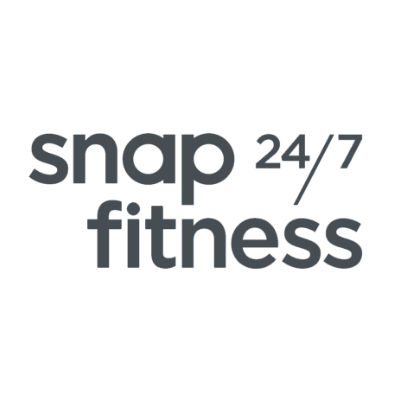5 Tips To Start a Successful Outdoor Personal Training Business

Are you thinking about becoming an outdoor personal trainer? Or moving more of your group training sessions outdoors?
You’re not alone. There’s a growing number of people who don’t want to train in traditional gyms and prefer to exercise outdoors and in nature.
Whether it’s hill running, triathlon training, wild swimming or calisthenics – people are increasingly taking their training outdoors...and this is a market you can tap into as a PT.
But where do you start if you want to build an outdoor personal training business?
Many PTs begin by taking an online personal training course to learn how to adapt sessions for different environments, including outdoor settings.
How do you choose the right outdoor training locations? What do you need to think about with programming and equipment?
And how do you market your outdoor sessions to new clients, and ensure your current clients engaged with fun and motivating workouts that keep them coming back week after week?
This article gives you five golden tips to get you started as an outdoor PT... so you can create incredible training experiences that your clients will love...
1. Choose the right location for your outdoor sessions
Where you choose to do your outdoor training session matters. It’s not just about setting up at some random open space; you need to pick somewhere you know creates an environment where your clients feel safe, motivated, and engaged. When you pick the right setting, it elevates the overall training experience for the clients who choose to work with you. Here’s how you can make the best choice possible when it comes to identifying a location...
Consider accessibility and convenience
When choosing a location, the first thing you should be thinking about is accessibility. Your clients are more likely to commit to regular sessions if the location is easy to get to...whether that’s first thing in the morning, or after work. So, ideally, you want to select a site that’s within a reasonable distance from where most of your clients live, or where they work. Urban parks, community sports fields, or even quiet areas of large public spaces can be great choices. These spots typically offer good transport links and parking options, making it hassle-free for clients to arrive on time and ready to work out.
Additionally, think about the time of day your sessions will take place. For early morning sessions, ensure the location is safe and well-lit. For evening sessions, consider the availability of parking and ease of access after hours. Making the location as convenient as possible reduces the barriers to attendance...afterall, you don’t want to give your clients any excuse to stay in bed or skip a session.
Ensure safety and comfort
Safety should be your top priority when selecting an outdoor training location. This isn’t just about choosing a place that’s free from obvious hazards; it’s about understanding the nuances of the environment where you’ll be training.
Inspect the terrain carefully. Uneven ground, slippery surfaces, or areas prone to flooding can pose risks of injury, which could harm your reputation as a trainer. The last thing you want is a client slipping and breaking a leg or getting injured.
Choose locations with flat, stable ground where your clients can perform exercises safely. If the area has a mix of surfaces, such as grass, concrete, and sand, even better – this can add variety to your workouts without compromising safety.
Lighting is another crucial factor you need to think about when planning a place to host your outdoor workouts. Natural light is fantastic, but in low-light conditions, like early mornings or late evenings, make sure the area is well-lit. Public spaces with streetlights or well-placed lamps are ideal. Avoid secluded areas that might feel unsafe, particularly if you’re training clients one-on-one. A secure, comfortable environment will help your clients focus on their training, knowing they are in good hands.
Vary your venues to keep clients engaged
Monotony is often the enemy of progress. If you always train in the same spot, your clients might start to feel bored, which can lead to a lack of motivation and, eventually, to them dropping out. Keeping your sessions dynamic by rotating between different locations can help maintain high levels of enthusiasm and engagement.
Consider mixing up your venues – switch between parks, beaches (if you’re lucky enough to live near one), or urban spaces. Each location offers unique opportunities to challenge your clients in different ways. Parks might provide open fields for sprints and bodyweight circuits, beaches can add resistance training through sand, and urban spaces might offer stairs or benches for plyometrics and strength exercises. Not to mention just giving your clients the novelty of training in a new environment to stimulate the body and mind in different ways – something that can make the workout feel fresh and exciting. Clients will appreciate the variety, and this will set you apart from other trainers who might stick to a single, predictable location. Plus, showing that you can adapt and innovate keeps clients coming back for more.
2. Equip yourself with the right gear and equipment
Running an outdoor personal training business requires you to be resourceful, adaptable, and prepared for all eventualities. Unlike the controlled environment of a gym, the
outdoors is an ever-changing environment, and presents unique challenges that demand specific equipment and a high level of organisation. Seasons change, temperatures fluctuate, weather can shift in a second...all which can throw a spanner in the works of your best-laid plans. The gear you choose can make or break the effectiveness of your sessions, so it’s crucial to invest wisely and stay prepared.
Invest in portable and durable equipment
When it comes to outdoor training kit, portability and durability are probably the two most important factors to consider. You’ll need equipment that is easy enough for you to transport and move from location to location, while withstanding the elements outdoors and still being effective for a variety of exercises.
Here’s a list of essential portable equipment:
- Resistance bands: Lightweight and versatile, resistance bands are perfect for adding resistance to bodyweight exercises. They’re lightweight, easy to carry and can be used in various settings, from wrapping around trees to attaching to fences.
- Kettlebells: These are fantastic for a wide range of exercises, from swings to goblet squats and loaded carries. While they’re heavier than some other equipment, kettlebells are worth the investment because of their durability and the fact they are so versatile for different elements of strength training and metabolic conditioning.
- Cones and markers: Useful for setting up drills, agility exercises, and marking out space for different activities. Cones are lightweight and can help create structure in your outdoor sessions.
- Suspension trainers (e.g., TRX): These are incredibly versatile tools that can be anchored to trees, poles, or any sturdy structure, allowing for a full-body workout that leverages your body weight.
- Mats: While not always necessary, a high-quality, durable mat can provide a more comfortable surface for exercises that require kneeling or lying down, especially if the ground is uneven or dirty.
Choosing the right equipment means balancing functionality with ease of transport. Always opt for high-quality gear that can withstand repeated use in different weather conditions. Investing in durable, multi-functional items will save you money in the long run and ensure you’re always prepared for a variety of workouts.
Be prepared for all weather conditions
Training outdoors means you’re at the mercy of the elements, so being prepared for all weather conditions is non-negotiable. It can be sunny one minute, and pouring with rain the next. Your ability to adapt to weather changes not only keeps your sessions running smoothly but also demonstrates your professionalism and commitment to your clients.
Start with your clothing. Invest in high-quality, weather-appropriate gear that will keep you comfortable no matter the conditions. For colder weather, opt for moisture-wicking base layers, a warm but breathable mid-layer, and a waterproof outer shell. In warmer weather, lightweight, breathable fabrics that protect against UV rays are essential.
Consider carrying the following in your kit:
- Portable shelter: A pop-up canopy or portable shelter can be a lifesaver in unexpected rain or intense sun. It provides a dry or shaded area where you and your clients can continue working out without interruption.
- Weather-appropriate gear: Think gloves for cold days, hats, and waterproof covers for your equipment. Having these items on hand shows your clients that you’ve thought of everything, which builds trust and credibility.
- Towels and tarps: These can be used to dry off wet equipment or create a barrier between the ground and your clients during exercises that require lying down or kneeling.
Keep your kit organised and transportable
Efficiency is key when you’re managing outdoor sessions. You’ll need to transport your equipment to different locations, often multiple times a day, so having an organised, transportable kit is essential.
Here are some tips for keeping your gear manageable:
- Use a sturdy, spacious bag or wheeled duffel: Invest in a high-quality bag that can comfortably carry all your equipment. A wheeled duffel bag or a backpack with compartments can make transporting your gear easier and more organised.
- Pack strategically: Place heavier items like kettlebells at the bottom of your bag, and lighter, more frequently used items like resistance bands and markers on top. This makes it easier to access what you need quickly during sessions.
- Keep similar items together: Use smaller bags or compartments within your main bag to group similar items. For example, keep all your resistance bands together in a smaller bag, so you can quickly grab what you need without rummaging around.
- Regularly check and maintain your equipment: After each session, clean your equipment and check for any wear and tear. This ensures your gear lasts longer and is always in top condition for your clients.
- Plan for transportation: If you’re travelling between multiple locations, ensure your vehicle is well-organised with a designated space for your equipment. Consider using storage bins or cargo organisers to keep everything in place and easy to access.
3. Master outdoor training techniques and programming
Outdoor training offers a unique opportunity to break free from the constraints of a gym and get creative with your programming. To make the most of this environment, you need to master specific techniques that leverage the benefits of outdoor settings while ensuring your clients achieve their fitness goals.
Master bodyweight exercises
Bodyweight exercises are going to be one of the best tools in your arsenal if you’re doing outdoor personal training. They require no equipment, making them perfect for the versatile and often unpredictable nature of outdoor sessions. Mastering bodyweight exercises allows you to deliver effective workouts that can be easily adapted to any environment.
The beauty of bodyweight exercises lies in their versatility. Whether it’s push-ups, squats, lunges, or planks, these exercises can be modified to suit different fitness levels and goals. For example, a basic push-up can be adapted to a more challenging decline push-up by utilising a park bench, or simplified to an incline push-up for beginners.
Furthermore, bodyweight exercises improve functional strength, which is highly beneficial for your clients’ everyday activities. Emphasise exercises that target multiple muscle groups simultaneously, such as burpees, or mountain climbers, to provide a full-body workout that builds strength, endurance, and agility. The more you master and creatively apply these exercises, the more you can challenge your clients and keep them engaged.
Incorporate natural elements into your workouts
One of the greatest advantages of outdoor training is the ability to utilise the natural environment as part of your workout routine. This not only adds variety to your sessions but also challenges your clients in ways that aren’t possible indoors.
Consider the following creative ways to incorporate natural elements:
- Hills and inclines: Use natural slopes for sprint drills, hill repeats, or walking lunges. Running or walking uphill increases the intensity of cardiovascular training and strengthens the lower body.
- Benches and picnic tables: These are perfect for exercises like step-ups, tricep dips, or elevated push-ups. They offer a stable surface for both upper and lower body exercises and can easily be integrated into a circuit.
- Trees and poles: Use trees or poles as anchors for suspension trainers, or incorporate them into agility drills by setting up markers around them for sprints and side shuffles.
- Sand and uneven terrain: Beaches or natural trails provide an unstable surface that challenges your clients’ balance and core stability. Exercises like lateral lunges, plyometric drills, or barefoot running on sand can intensify the workout and improve proprioception.
Tailor programmes for different fitness levels
One of the key challenges in outdoor training is catering to a diverse range of fitness levels within a group setting. To ensure that every client is appropriately challenged, it’s essential to tailor your programmes to suit beginners, intermediates, and advanced clients.
For beginners, focus on mastering basic movements with proper form. Exercises should be low-impact and scalable, such as bodyweight squats, modified push-ups, and step-ups. Keep the intensity moderate, and allow for plenty of rest between sets to build confidence and prevent injury.
For intermediate clients, introduce more complex movements and increase the intensity. You can incorporate exercises like jump squats, plyometric push-ups, and sprints. Consider adding in circuit training that combines strength, endurance, and agility drills to keep them engaged and progressing.
For advanced clients, challenge them with high-intensity interval training (HIIT) and advanced bodyweight exercises like pistol squats, handstand push-ups, and explosive sprints. Use the environment creatively to add resistance and instability, such as incorporating sandbags or resistance bands anchored to trees.
In a mixed-level group, structure the session so that each exercise has scalable options. For example, during a circuit, beginners can perform a lower-impact version of an exercise, while advanced clients perform a more challenging variation. Encourage clients to work at their own pace and remind them that progression is key to improvement.
4. Build a strong client base through effective marketing
To succeed in the competitive world of personal training, especially in an outdoor setting, building a strong client base is essential. Effective marketing can set you apart from other trainers and help you attract and retain loyal clients. By leveraging social media, showing what you do, offering strategic promotions, and engaging with your local community, you can create a thriving business that consistently draws in new clients.
Use social media to showcase your outdoor sessions
Social media allows you to showcase what you do, who you are, and why potential clients should choose you as a trainer.
The best way to do this is to give your audience a look at the kind of things you do in your workouts and how you help your clients. Start by regularly posting high-quality images and videos of your outdoor sessions.
If it looks fun, exciting, and aspiration, you’ll start to attract people’s interest and hook them in. Showcasing the beautiful locations you train in, the variety of exercises you offer, and the enthusiasm of your clients will make your services stand out. It’s not just about showing workouts; it’s about telling a story that highlights the experience and results your clients can expect.
Client testimonials are particularly impactful too. Encourage satisfied clients to share their experiences on your social media pages, or create short video testimonials that you can post. Prospective clients are more likely to trust the word of others who have already benefited from your training. Additionally, posting snippets of your sessions – whether it’s a challenging circuit or a creative use of the outdoor environment – can inspire potential clients to get involved.
Remember to engage with your audience. Respond to comments, ask questions in your posts to encourage interaction, and use stories and live videos to give followers a behind-the-scenes look at your training style. Consistent and engaging social media activity helps you build a community around your brand, making it easier to convert followers into paying clients.
Offer free sessions or discounts to attract new clients
One of the most effective ways to attract new clients is to remove the initial barrier to entry – price. People always love to ‘try before they buy’ – so offering a free session or discounts can be a great strategy to get people through the door to experience what you have to offer (without the fear of needing to make a financial commitment up front). It is a signal to prospective clients that you are confident in the value you can deliver them.
Start by offering a free trial session or a discounted package for new clients. This allows them to experience your training style, the benefits of outdoor workouts, and the personal attention you provide. The goal is to convert these trial clients into long-term customers by impressing them with your expertise and the quality of your sessions.
Another effective strategy is to offer a referral discount. Encourage your current clients to bring friends or family members by offering them a discount on their next session or package if their referral signs up. This not only rewards your loyal clients but also taps into their social networks to expand your reach.
Promotions tied to special events or seasons can also be effective. For instance, a “New Year, New You” discount in January or a summer fitness boot camp at a reduced rate can draw in clients who are motivated by the change in season. These promotions create a sense of urgency and can help you quickly build your client base.
Network within your local community
Your local community is a rich resource for potential clients, and networking within it is a crucial part of building a successful outdoor personal training business. By establishing strong connections and becoming an active participant in community events, you can raise your profile, chat to people about what you do, and attract clients who value local expertise.
Start by participating in local events such as charity runs, health fairs, or community fitness challenges. Volunteering your services at these events not only demonstrates your commitment to the community but also puts you in front of potential clients who are already interested in fitness. Offer to lead a warm-up session, set up a booth to provide fitness assessments, or even sponsor a local sports team. These activities can position you as the go-to fitness expert in your area.
Engaging with your community also includes building relationships with your clients outside of training sessions. Attend local events where your clients are likely to be present, and support their endeavours, whether it’s attending their charity events or celebrating their personal achievements. Building a personal connection with your clients fosters loyalty and encourages word-of-mouth referrals.
5. Create a memorable client experience outdoors
Your clients don’t just want a workout...they want an experience. Creating a memorable client experience time and time again is the key to building long-lasting relationships with loyal clients. When training outdoors, you have the unique opportunity to craft experiences that are both effective and enjoyable, making your sessions something your clients look forward to – getting out in nature, moving their bodies, and training alongside a great community of people.
Here’s how to focus on client-centric training, build a sense of community, and continuously improve your sessions based on client feedback.
Focus on client-centric training
Every client has their own goals, preferences, and limitations, and it’s your job to tailor each session to meet these individual needs. A client-centric approach means putting your clients’ objectives at the forefront of every workout, ensuring they feel valued and understood.
Start by taking the time to truly understand your clients’ goals – whether it’s weight loss, building strength, improving endurance, or enhancing overall well-being. From there, design sessions that align with these goals while incorporating elements they enjoy. For instance, if a client loves running, incorporate more cardio drills; if they’re motivated by challenges, introduce timed circuits or personal bests to strive for.
It’s also important to consider the client’s current fitness level, any physical limitations, and their personal preferences. By tailoring your approach, you can create sessions that are not only effective but also enjoyable and sustainable. This personalised attention shows clients that you’re invested in their success, which builds trust and strengthens your professional relationship.
Additionally, make sure to celebrate milestones and achievements. Recognising progress, no matter how small, keeps clients motivated and engaged. Whether it’s completing a set of push-ups they couldn’t do before or hitting a new personal best in a sprint, acknowledging these successes makes the experience more rewarding and encourages them to continue their commitment to fitness.
Build a sense of community among your clients
One of the most powerful aspects of outdoor training is the potential to build a sense of community among your clients. Group sessions, in particular, offer a fantastic opportunity to foster camaraderie, which can significantly enhance the overall experience.
Creating a supportive group dynamic starts with setting the right tone. Encourage clients to support one another, celebrate each other’s successes, and work together to achieve common goals. This might be as simple as pairing clients up for partner exercises, organising group challenges, or hosting regular group events outside of training, such as social gatherings or fitness-related outings.
A strong sense of community can lead to higher client retention rates, as clients who feel connected to their group are more likely to stay committed. The social aspect of training becomes an additional motivator, and clients may look forward to sessions not just for the workout, but for the camaraderie and support they receive from their peers.
Moreover, a thriving community can also act as a powerful referral network. Satisfied clients are likely to bring friends, family, and colleagues into the group, helping you to
organically grow your client base. By cultivating a positive, inclusive atmosphere, you’ll create a training environment where everyone feels welcome and motivated to achieve their best.
Gather and act on client feedback
To continuously improve and refine the outdoor training experience, it’s essential to regularly gather and act on client feedback. This not only helps you fine-tune your sessions but also demonstrates to your clients that their opinions are valued and that you’re committed to providing the best possible service.
Start by actively seeking feedback after sessions. This can be done informally through casual conversations or more formally through surveys or feedback forms. Ask clients what they enjoyed, what they found challenging, and what they’d like to see more or less of in future sessions. Be open to constructive criticism—it’s an invaluable tool for growth.
Once you’ve gathered feedback, take action. If multiple clients mention that they’d like more variety in their workouts, introduce new exercises or change up the session format. If a client expresses concern about a particular aspect of the training, such as the intensity level, address it immediately by adjusting your approach.
It’s also important to follow up with clients to let them know how their feedback has been implemented. This not only shows that you’re listening but also reinforces their investment in the training process. Clients who see that their opinions make a difference are more likely to feel a sense of ownership and loyalty to the programme.
Regularly refining your sessions based on client feedback ensures that you’re constantly evolving and improving as a trainer. It helps you stay responsive to your clients’ needs and keeps your training programmes fresh, engaging, and effective.


























